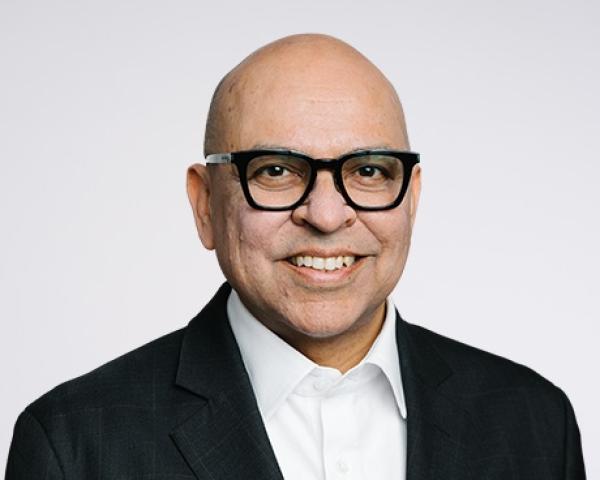The insurance industry, started in the 17th century at Lloyd’s of London, has made significant progress since then, but it is only now that it is truly at the cusp of disruption.
The traditional models of business development through intermediaries, pricing through actuarial models and underwriting on the basis of experience and data collected through physical inspection of risk and proposal forms are being challenged, as are the policy contract issuance and claims handling methods.
The digital revolution has led to all types of information and data not only available in public domain, but easy to access and share at lightning speed. People are connected to each other on social media, devices are connected to the internet, homes and cars are becoming smarter through IoT and robotics and AI are increasingly prevalent in our everyday lives.
Almost 150 years back, when the first self-propelled car came out and could drive at only 4mph, a person with a red flag would walk in front of the car to ensure road safety. Fast forward, and we are now looking at cars that can drive themselves.
While insurance was slower to adapt than other industries, there has been a recent boom of insurtechs. This creates meaningful opportunities and one of the most exciting times in the insurance space.
Today’s customer expects information to be available at her fingertips. Information is either a click away on search engines or through voice prompts on your smart phone or smart assistant.
We also face changing risk scenarios and heightened unpredictability. Cyber is at the top of the list – and headlines. Increase in terrorism or “lone wolf events” – at places one would never imagine to be faced with such risks. Changing global weather patterns – the recent floods in Houston, hurricanes in Florida, wildfires and mudslides in California and the extreme winter freezes in the Northeast. And changing geopolitical and socioeconomic environments.
See also: In Age of Disruption, What Is Insurance?
How do we cope with this rapidly changing risk profile and environment? Will traditional insurance be able to provide relevant protection and, more importantly, will it be delivered, serviced and provided in a manner to match customer expectations in today’s digital age?
Insurers are responding to this challenge in two ways:
- Digitizing the front-end user experience and user interface but still continuing to follow the traditional model of underwriting, pricing, risk selection and claims.
- Disrupting the whole value chain from the front end of the business to the entire back end.
These responses are happening at both startups and established insurers. The winners will be companies that are willing to disrupt the entire value chain from front to back end.
What does that mean?
With the amount of internal and external data sources available today, we can get enough information on prospective customers and the risks they face so as to enable us to personalize their insurance and meet their specific needs.
How will we do it?
By harnessing big data, connected people and devices, smarter homes and cars and so on, and combining this with years of customer and claims data available with insurance companies. Insurers able to use this wealth of internal and external data in a manner to create distinct customer profiles will:
- Know the customer
- Anticipate the risks they are exposed to
- Find the gaps and where they may need insurance
- Give consumers a tailored solution to cover these gaps
As an example, and subject to compliance and other protected privacy considerations, let’s assume the IP address or phone number is linked as the unique identifier of a person. As soon as that person calls or logs in with her device, the insurer should be able to pull up all of her available information. Then, without the person answering all kinds of questions and forms, the insurer could automatically offer relevant insurance:
“Welcome, Joan, for your two cars and home in Ohio, here are the coverages and premiums. Please select one.”
As permissible, the same data can be used for underwriting, risk selection and pricing. Today, we as insurers have access to much more data and information on the risks and needs of our customers than ever before -- provided we are able to use the data effectively, a big challenge most incumbents face today.
As with underwriting and risk selection, we can use data sources and technology such as sensors, AI and IoT at the time of claims. That includes the possible use of parametric insurance for natural catastrophes, and even smart contracts on a blockchain that self-execute the adjusting and settling of certain types of claims – the objective being to pay claims in a frictionless manner.
Before we get there, we will need to work with regulators on data privacy laws that are fit for purpose for this digital age.
See also: When Incumbents Downplay Disruption…
The other very important aspect of the new age insurer is to offer a full suite of “personal risk management services.” What that means is that, using the insights gathered over years of claims data, coupled with the availability of external data and AI, we should be able to:
- Predict – help insureds prevent a potential loss before it occurs. I believe people do not buy insurance to make a claim -- the real purpose is protection. What better protection is there than someone helping continuously monitor and help prevent bad things from happening?
- Assist – if even after efforts of prevention something unfortunate happens, insurers should be able to tap into their claims handling. Some companies have invested in risk management and loss mitigation units to actually assist the insureds through the time of need.
- Restore – and finally help the insureds to restore the loss or damage. This is the actual claim settlement, which is what most insurers do as the only activity at the time of claims.
In what I propose, the insurance (restoration or loss indemnification) is only one-third of what a new age insurer should be doing. And all of this needs to be seamless and digital with the use of available and developing technology.
Time has come to disrupt the centuries-old insurance industry from what some would call a “necessary evil” to “a pleasant experience called insurance.”







